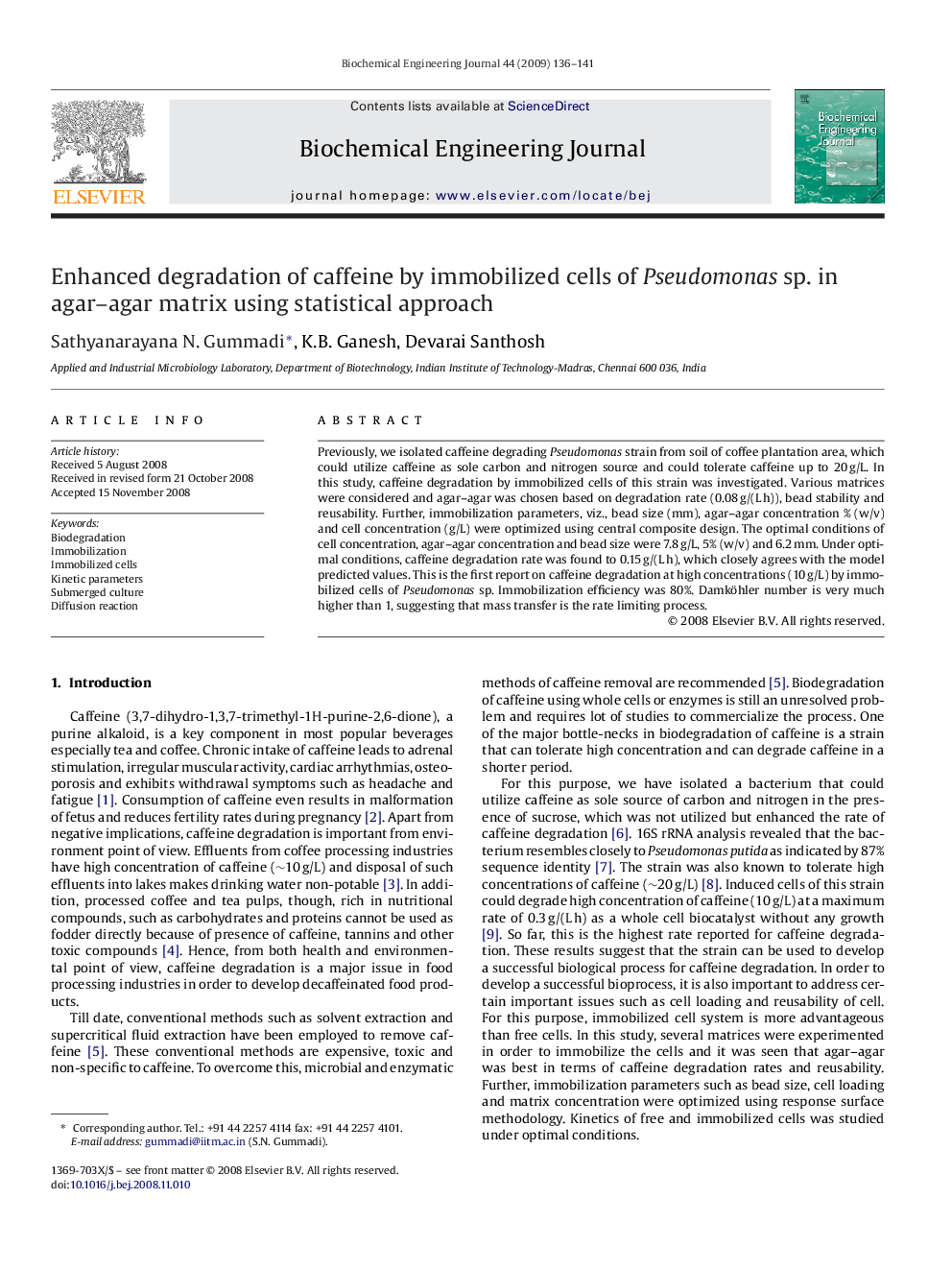| Article ID | Journal | Published Year | Pages | File Type |
|---|---|---|---|---|
| 4261 | Biochemical Engineering Journal | 2009 | 6 Pages |
Previously, we isolated caffeine degrading Pseudomonas strain from soil of coffee plantation area, which could utilize caffeine as sole carbon and nitrogen source and could tolerate caffeine up to 20 g/L. In this study, caffeine degradation by immobilized cells of this strain was investigated. Various matrices were considered and agar–agar was chosen based on degradation rate (0.08 g/(L h)), bead stability and reusability. Further, immobilization parameters, viz., bead size (mm), agar–agar concentration % (w/v) and cell concentration (g/L) were optimized using central composite design. The optimal conditions of cell concentration, agar–agar concentration and bead size were 7.8 g/L, 5% (w/v) and 6.2 mm. Under optimal conditions, caffeine degradation rate was found to 0.15 g/(L h), which closely agrees with the model predicted values. This is the first report on caffeine degradation at high concentrations (10 g/L) by immobilized cells of Pseudomonas sp. Immobilization efficiency was 80%. Damköhler number is very much higher than 1, suggesting that mass transfer is the rate limiting process.
